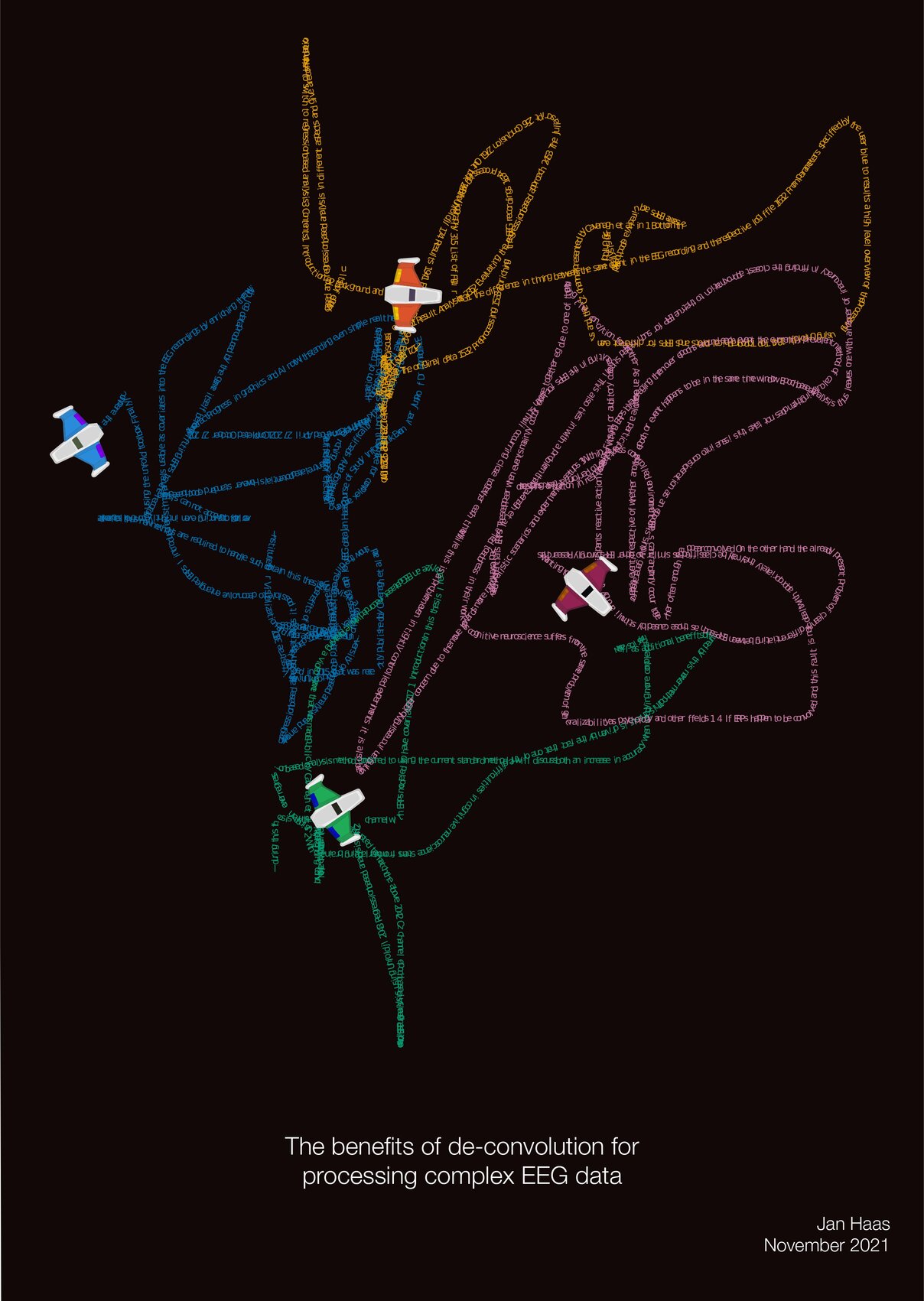The benefits of de-convolution for processing complex EEG data
for Jan Haas
Jan Haas’ thesis delves into the effects of computer gaming on the brain, using deconvolution techniques to better understand cognitive processes. The Thesis Art piece visualizes the in-game trajectories of players steering a spaceship, offering an innovative look at gameplay behavior.
The Creation Process
Benedikt visualized the key concept of gaming trajectories, representing the paths of human subjects as they dodged enemy spaceships. The simplicity of the task allowed for a smooth creation process, leading to a graphic that focuses on the novelty of gaming’s impact on brain activity.
Artistic Concept
The visual concept aims to represent the gameplay experience, a core element of Jan’s research. By showing the trajectories in a new way, the piece captures the essence of the experiment’s dynamics. The underlying game was a side-scroller space-ship shooter, thus the shown trajectories purposefully distort the actual underlying data.
“This is my first piece where I’m depicting the experiment’s evolving process itself—rather than presenting the encompassing brain data. It’s a fun challenge to break away from conventional visualizations.”
Benedikt Ehinger
Personal Reflection
Creating this piece was a more straightforward but “rewarding experience”. The colors, the trajectories and the space ship somehow fit together nicely, encompassing the underlying data of the 8-bit “Escape from asteroid axon” research game.
